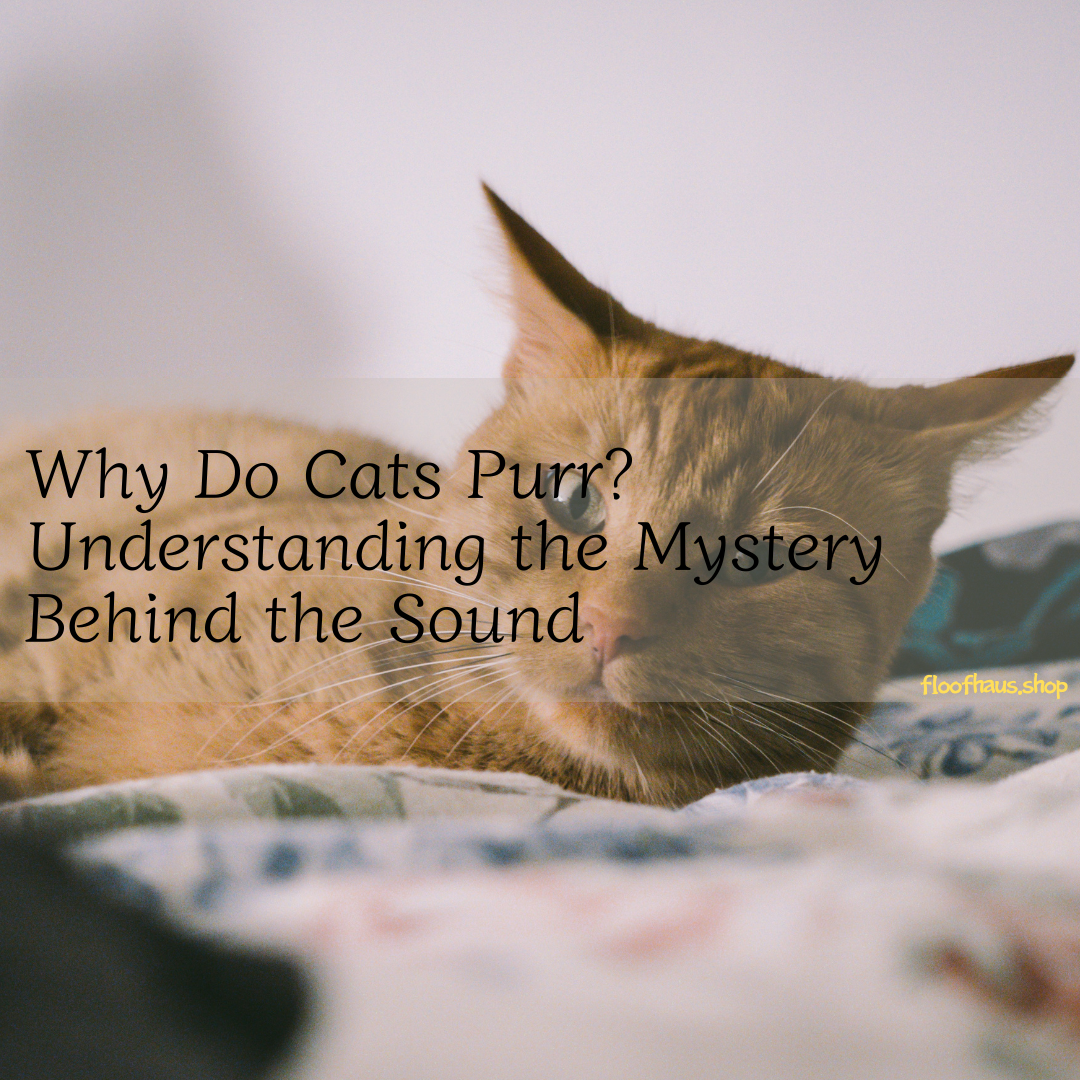
Why Do Cats Purr? Understanding the Mystery Behind the Sound
Share

Why Do Cats Purr?
At first glance, the answer seems simple: it is because they’re happy. While that’s true much of the time, the full story is much more complex. They purr for multiple reasons—sometimes out of contentment, but also in response to stress, pain, or as a way to communicate with their humans and other cats.
Scientifically, a purr is produced when a cat’s brain signals the voice box (laryngeal) muscles to twitch at a rapid rate—between 25 and 150 vibrations per second. This movement causes air to vibrate during both inhalation and exhalation, creating that signature rumbling sound.
Communication: The Language of Purring
Purring is one of the primary ways to communicate. Unlike meows—which are usually directed toward humans—purring can serve multiple audiences.
- With humans: Cats often purr when they curl up on your lap or when you pet them. This signals trust, comfort, and a desire for closeness. Some cats also use a special “solicitation purr” to ask for food, which blends a higher-pitched tone similar to a baby’s cry.
- With kittens: Mother cats usually purr to reassure and comfort their newborns. Since kittens are born blind and deaf, the vibration of a mother’s purr helps guide them to warmth and milk.
- With other cats: While less common than purring with humans, cats sometimes use purrs to signal peaceful intentions to other felines.
Purring is, in many ways, the feline equivalent of a smile—it’s not always about happiness, but it usually signals connection and reassurance.
Emotional Reasons for Purring
Beyond communication, purring regulates their emotions and respond to their environment.
Contentment and relaxation
The most familiar purr is the one you hear when your cat is curled up, kneading, or enjoying affection. It’s their way of saying, “I feel safe and comfortable.”
Stress relief
Cats may also purr when they’re nervous or adjusting to new surroundings. The rhythmic vibrations have a self-soothing effect, helping them stay calm in uncertain situations.
Seeking comfort
Cats sometimes purr when they’re unwell, frightened, or in pain. In these cases, the purr is thought to function like a coping mechanism—similar to how humans might hum or rock back and forth when anxious.
The Healing Power of Purring
One of the most fascinating aspects of why kitties purr is the potential health benefits for both cats and humans. Studies suggest that the frequency of a cat’s purr (25–150 Hz) falls within the range that promotes tissue regeneration and bone healing.
For cats
- Bone strength: Vibrations may stimulate bone repair and density.
- Wound healing: Purring could aid in faster tissue regeneration.
- Pain management: They often purr while recovering from injury or illness, possibly to reduce discomfort.
For humans
- Stress reduction: Petting a purring cat has been shown to lower blood pressure and release calming endorphins.
- Healing companionship: Some researchers believe exposure to purring vibrations may contribute to improved joint and bone health in humans, though more studies are needed.
While not a substitute for medical care, the healing potential of purring adds another layer of wonder to the feline-human bond.
When Purring Signals a Problem
While purring is usually positive, sometimes it’s a red flag. Pay close attention if you notice your cat purring in unusual situations, such as:
- During illness: Cats in pain may purr to soothe themselves.
- At the vet: Nervous cats sometimes purr in clinical settings, masking their discomfort.
- While refusing food: A purring cat that isn’t eating may be trying to self-comfort while unwell.
If your cat’s purr is paired with lethargy, changes in appetite, or unusual behavior, it’s worth consulting a veterinarian.
How to Respond to Your Cat’s Purring
The way you react to purring can strengthen your bond:
- Encourage positive purrs: Reward your cat with gentle petting, treats, or playtime when they purr in moments of relaxation.
- Offer comfort: If your cat is purring in a stressful environment, provide a quiet, safe space with familiar bedding.
- Monitor health: Stay alert to purring paired with signs of illness, and seek veterinary advice if you’re concerned.
By tuning into the context, you’ll gain a deeper understanding of what your cat is trying to express.
At Floofhaus, we celebrate every purr
At Floofhaus, we understand that a cat’s purr is more than just a sound—it’s a sign of their health, happiness, and emotional wellbeing. That’s why we provide products designed to keep your feline friend calm, safe, and cared for:
- Cozy cat beds and blankets to create the perfect purring nook.
- Interactive toys and scratchers to keep cats engaged and stress-free.
- Hydration solutions like fountains and ceramic bowls that support overall health.
- Nutritional treats designed to promote wellness without upsetting sensitive stomachs.
- Expert guides and resources to help you interpret your cat’s behavior with confidence.
Whether your cat is purring in joy or looking for comfort, Floofhaus is here to help you create a loving, supportive environment.
Conclusion
So, why do they purr? The answer is a mix of instinct, communication, emotional regulation, and even healing. From a mother cat comforting her kittens to a senior cat soothing herself through aches, purring is one of the most remarkable feline behaviors.
By listening to the context of the purr, pet parents can gain valuable insights into their cat’s wellbeing. And in return, we benefit from the calm, joy, and companionship that only a purring cat can provide.
Sources
American Veterinary Medical Association – Cat Communication
Scientific American – The Healing Power of the Cat’s Purr
VCA Animal Hospitals – Understanding Cat Behavior
